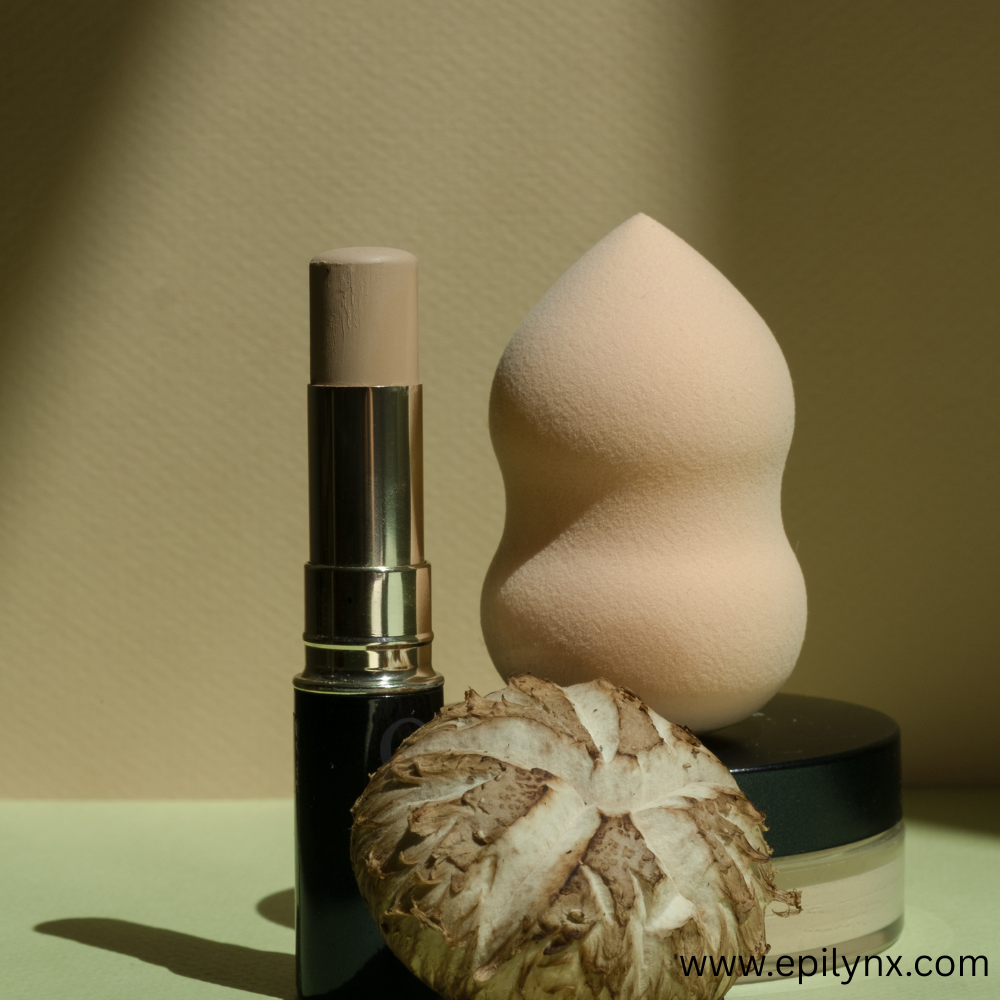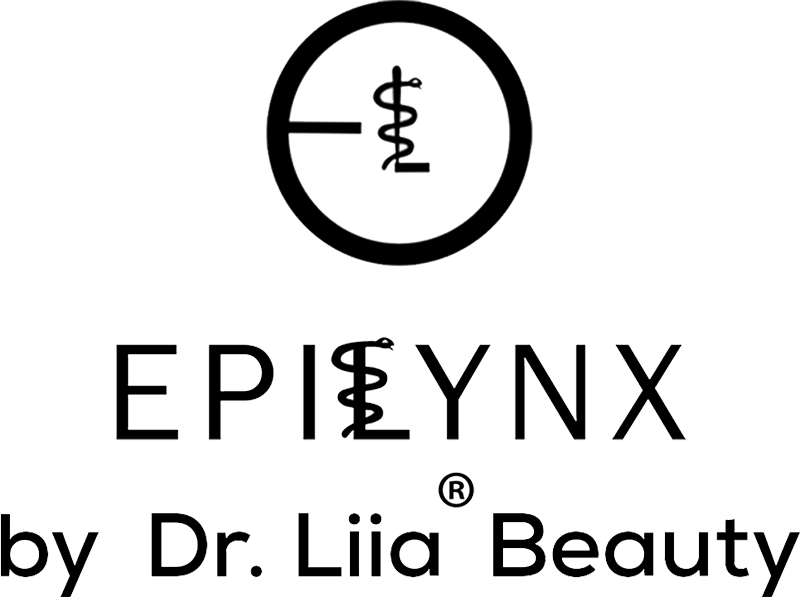
The Laboratory in Your Lipstick: Why Your Makeup Bag Contains More Chemicals Than a Science Experiment
Mind-bending reality: That single tube of mascara contains approximately 50-75 different chemical compounds, many of which were originally developed for completely different industries.
Ever wonder why your lipstick stays put through coffee, lunch, and a make-out session, but your lip balm disappears after one sip of water? Or why that "5-minute face mask" can somehow deliver visible results faster than products you've been using for months?
Welcome to the fascinating world of cosmetic chemistry, where petroleum derivatives make your skin glow, bacteria produce your anti-aging serums, and the same ingredient that fireproofs buildings helps your mascara stay clump-free.
Plot twist: Understanding the science behind your beauty products will completely change how you shop, what you buy, and why some products work miracles while others are expensive disappointments.
The Chemical Evolution of Beauty Products
Your great-grandmother's beauty routine was basically kitchen chemistry. Today's products are sophisticated chemical engineering marvels that would make NASA jealous.
The Ingredient Revolution Timeline:
1920s-1940s: The Kitchen Era
- Primary ingredients: Plant oils, waxes, simple alcohols
- Preservation method: Salt, alcohol, or use-it-quickly
- Science level: High school chemistry
- Problem: Products spoiled quickly, limited effectiveness
1950s-1970s: The Synthetic Breakthrough
- Game changers: Synthetic preservatives, emulsifiers, stabilizers
- Innovation: Products that lasted months instead of days
- Science level: Industrial chemistry
- Plot twist: Many "traditional" ingredients we think are ancient are actually from this era
1980s-2000s: The Performance Revolution
- Breakthroughs: Silicones, liquid crystals, microencapsulation
- Results: Products that could actually change skin appearance
- Science level: Materials science and nanotechnology
- Reality check: This is when beauty products became genuinely effective
2000s-Present: The Biotechnology Era
- Cutting edge: Lab-grown ingredients, peptides, growth factors
- Capability: Products that can actually alter cellular function
- Science level: Biochemistry and molecular biology
- Future shock: We're essentially applying pharmaceutical-grade compounds to our faces daily
The Molecular Architecture of Beauty
Every beauty product is a carefully engineered system where each ingredient has a specific molecular job.
The Product Structure Science:
Active Ingredients (The Stars):
- Function: Actually change your skin/appearance
- Concentration: Usually 0.1-10% of total formula
- Examples: Retinol, hyaluronic acid, peptides
- Surprising fact: Most "active" ingredients would be useless without the supporting cast
Delivery Systems (The Supporting Actors):
- Function: Get actives where they need to go
- Technology: Liposomes, microspheres, penetration enhancers
- Innovation level: Often more complex than the active ingredients
- Plot twist: The delivery system often costs more to develop than the active ingredient
Base Formula (The Foundation):
- Function: Create the product's basic structure and feel
- Complexity: Can involve 20-40 different ingredients
- Science: Emulsion chemistry, rheology, thermodynamics
- Reality: This is where the magic of product performance really happens
Preservative System (The Bodyguards):
- Function: Prevent microbial contamination
- Challenge: Must work in different pH ranges and product types
- Complexity: Often requires 3-5 different preservatives working together
- Safety paradox: Essential for safety but often the most allergenic components
The Silicone Science Revolution
Silicones transformed beauty products from sticky, greasy messes into elegant, high-performance formulations.
The Silicone Chemistry Breakdown:
What silicones actually are:
- Chemical structure: Silicon-oxygen backbone with organic groups
- Origin: Developed for aerospace and industrial applications
- Beauty discovery: Accidentally discovered to create amazing skin feel
The silicone family tree:
- Dimethicone: The basic silicone, creates silky feel and water resistance
- Cyclopentasiloxane: Volatile silicone that evaporates, leaving no residue
- Dimethicone crosspolymer: Creates that "bouncy" gel texture
- Amodimethicone: Hair silicone that deposits on damaged areas
Why silicones work so well:
- Molecular size: Large molecules that sit on skin surface
- Film formation: Create invisible protective barriers
- Light refraction: Scatter light to minimize imperfections
- Temperature stability: Work in extreme hot and cold conditions
The silicone controversy science:
- Bioaccumulation: Some silicones persist in environment
- Skin effects: Generally non-comedogenic and hypoallergenic
- Environmental impact: Newer silicones are designed to biodegrade
- Performance reality: Nothing else performs quite like silicones
The Hyaluronic Acid Molecular Marvel
Everyone talks about hyaluronic acid, but the science behind why it works is mind-blowing.
The Hyaluronic Acid Deep Dive:
The molecular structure:
- Size: Can contain up to 25,000 sugar molecules linked together
- Weight: Molecular weight from 10,000 to 2,000,000 daltons
- Shape: Long, twisted chains that trap water like a net
The water-binding science:
- Capacity: One molecule can hold 1,000 times its weight in water
- Mechanism: Creates hydrogen bonds with up to 10,000 water molecules
- Duration: Can maintain hydration for 12-24 hours
- Surprising fact: Your body produces 5+ grams daily, but breaks it down just as fast
The molecular weight mystery:
- High molecular weight (1M+ daltons): Sits on surface, provides immediate plumping
- Medium molecular weight (100K-1M daltons): Penetrates slightly, provides medium-term hydration
- Low molecular weight (<100K daltons): Penetrates deeper, provides longer-term benefits
- Ultra-low molecular weight (<10K daltons): May actually cause inflammation in some people
The formulation challenges:
- pH sensitivity: Must be formulated at specific pH to remain stable
- Heat sensitivity: Breaks down at temperatures above 80°F
- Concentration limits: More isn't always better - optimal concentration is 0.1-2%
The Retinoid Chemistry Complexity
Retinoids are the closest thing beauty has to miracle drugs, but the chemistry behind why they work is incredibly complex.
The Vitamin A Conversion Cascade:
The retinoid family hierarchy:
- Retinyl palmitate: Weakest, requires 4 conversion steps
- Retinol: Moderate strength, requires 2 conversion steps
- Retinaldehyde: Stronger, requires 1 conversion step
- Retinoic acid: Strongest, works immediately (prescription only)
The cellular mechanism:
- Nuclear receptors: Retinoids bind to specific DNA receptors
- Gene expression: Literally changes which genes are active
- Protein synthesis: Increases collagen and elastin production
- Cell turnover: Accelerates skin cell replacement cycle
The stability nightmare:
- Light sensitivity: Breaks down in UV light within minutes
- Air sensitivity: Oxidizes rapidly when exposed to oxygen
- Heat sensitivity: Degrades at room temperature over time
- pH sensitivity: Only stable in specific pH ranges
The formulation solutions:
- Microencapsulation: Protective bubbles around retinol molecules
- Ester forms: More stable versions that convert to retinol on skin
- Antioxidant systems: Vitamin E and C protect retinol from degradation
- Airless packaging: Prevents oxidation during use
The Peptide Science Fiction Becoming Reality
Peptides in beauty products sound like science fiction, but they're based on solid biochemistry.
The Peptide Categories and Functions:
Signal peptides:
- Function: Tell cells to produce more collagen
- Examples: Palmitoyl pentapeptide-4 (Matrixyl)
- Mechanism: Mimic wound healing signals that trigger collagen synthesis
- Effectiveness: Clinical studies show 15-30% improvement in fine lines
Carrier peptides:
- Function: Deliver minerals needed for collagen synthesis
- Examples: Copper peptides (GHK-Cu)
- Mechanism: Transport copper ions to fibroblast cells
- Bonus effect: Also have antioxidant and anti-inflammatory properties
Neurotransmitter peptides:
- Function: Reduce muscle contractions that cause wrinkles
- Examples: Acetyl hexapeptide-8 (Argireline)
- Mechanism: Interfere with nerve signals to facial muscles
- Controversy: Some dermatologists question effectiveness vs. Botox
Enzyme-inhibitor peptides:
- Function: Block enzymes that break down collagen
- Examples: Soybean peptides
- Mechanism: Prevent collagenase from destroying existing collagen
- Strategy: Defense rather than offense approach to aging
The peptide delivery challenge:
- Size problem: Most peptides are too large to penetrate skin
- Stability issues: Break down quickly in typical cosmetic formulations
- pH sensitivity: Only function within narrow pH ranges
- Concentration requirements: Need specific amounts to be effective
The Sunscreen Science Evolution
Sunscreen chemistry has evolved from simple zinc oxide to sophisticated UV-filtering systems.
The UV Protection Science:
Physical (mineral) sunscreens:
- Ingredients: Zinc oxide, titanium dioxide
- Mechanism: Scatter and reflect UV rays like tiny mirrors
- Particle size: Nanoparticles (20-100 nanometers) vs. traditional (200+ nanometers)
- Nanoparticle controversy: Smaller particles are invisible but may penetrate skin
Chemical sunscreens:
- Mechanism: Absorb UV energy and convert it to heat
- Common filters: Avobenzone, octinoxate, oxybenzone
- Stability problems: Many chemical filters break down in sunlight
- Combination necessity: Usually need 3-4 different filters for broad spectrum protection
The SPF mathematics:
- SPF 15: Blocks 93% of UVB rays
- SPF 30: Blocks 97% of UVB rays
- SPF 50: Blocks 98% of UVB rays
- SPF 100: Blocks 99% of UVB rays
- Diminishing returns: Higher SPF doesn't mean proportionally better protection
The photostability revolution:
- Problem: Early sunscreens broke down in sunlight
- Solution: Photostabilizers that protect the UV filters
- Innovation: Encapsulated UV filters that don't degrade
- Next generation: Self-repairing sunscreen formulations
The Preservative Science Balancing Act
Preservatives are the most chemically challenging aspect of cosmetic formulation.
The Microbial Challenge:
What products need to fight:
- Bacteria: Can multiply every 20 minutes in suitable conditions
- Mold: Thrives in water-containing products
- Yeast: Causes product separation and rancidity
- Environmental contamination: Introduced every time you use the product
The preservative system requirements:
- Broad spectrum: Must kill different types of microorganisms
- pH compatibility: Must work across different product pH levels
- Temperature stability: Must survive manufacturing heat and storage conditions
- Ingredient compatibility: Cannot react with other formula components
The concentration challenge:
- Minimum effective concentration: Too little allows microbial growth
- Maximum safe concentration: Too much causes skin sensitization
- Synergistic effects: Combinations can be more effective than single preservatives
- Resistance development: Microorganisms can adapt to preservatives over time
The "Natural" Preservative Reality:
Plant-derived preservatives:
- Examples: Rosemary extract, grapefruit seed extract
- Limitations: Often less effective, can cause more allergic reactions
- Concentration requirements: May need higher concentrations to be effective
- Stability issues: Natural preservatives often break down faster
The "preservative-free" myth:
- Reality: All water-containing products need preservation
- Marketing tricks: Using ingredients that preserve but aren't called preservatives
- Self-preserving systems: pH, alcohol, or oil levels that prevent microbial growth
- Packaging solutions: Airless containers that reduce contamination risk
The Color Chemistry Complexity
The pigments and dyes that give beauty products their colors are marvels of chemistry and physics.
The Color Science Breakdown:
Inorganic pigments (The traditional colors):
- Iron oxides: Reds, yellows, browns, blacks - the workhorses of color cosmetics
- Titanium dioxide: White pigment and opacifier
- Chromium oxide: Greens
- Ultramarine: Blues and purples
Organic pigments (The modern colors):
- Synthetic dyes: Bright, intense colors impossible with natural pigments
- Lake pigments: Dyes that have been made insoluble for use in cosmetics
- Neon pigments: Fluorescent colors that appear to glow
- Color-changing pigments: Thermochromic and photochromic effects
Special effect pigments:
- Mica: Creates shimmer and pearl effects
- Bismuth oxychloride: Intense pearl luster but can be irritating
- Interference pigments: Create color-changing effects based on viewing angle
- Holographic pigments: Rainbow effects from diffraction gratings
The color stability challenges:
- Light stability: Many pigments fade in UV light
- Chemical compatibility: Some pigments react with other ingredients
- pH sensitivity: Color can change based on product acidity
- Temperature effects: Heat can cause color shifts or fading
The Emulsion Science Foundation
Most beauty products are emulsions - stable mixtures of oil and water that shouldn't be able to mix.
The Emulsion Chemistry:
Why oil and water don't mix:
- Polarity: Water is polar, oils are non-polar
- Surface tension: Creates energy barrier between phases
- Thermodynamics: Mixing requires energy input
- Natural tendency: Separate into distinct layers
The emulsifier solution:
- Molecular structure: One end loves water, one end loves oil
- Examples: Lecithin, polysorbate, cetearyl alcohol
- Mechanism: Surround oil droplets to stabilize them in water
- HLB system: Hydrophilic-Lipophilic Balance determines which emulsifier to use
Emulsion types and properties:
- Oil-in-water: Light, easily absorbed, most lotions and serums
- Water-in-oil: Heavy, occlusive, moisturizing creams and foundations
- Multiple emulsions: Water-in-oil-in-water, sophisticated delivery systems
- Pickering emulsions: Stabilized by particles instead of traditional emulsifiers
The stability science:
- Particle size: Smaller droplets create more stable emulsions
- Viscosity: Thicker products resist separation better
- Temperature cycling: Products must survive shipping and storage temperature changes
- pH stability: Emulsions can break down if pH changes
The Nanotechnology in Beauty Revolution
Beauty products now routinely use particles smaller than viruses to deliver ingredients.
The Nanotechnology Applications:
Nanoparticle delivery systems:
- Liposomes: Tiny bubbles that carry ingredients through skin layers
- Solid lipid nanoparticles: Stable carriers for sensitive ingredients
- Polymeric nanoparticles: Controlled-release systems for active ingredients
- Size scale: 10-500 nanometers (a human hair is 80,000 nanometers wide)
The penetration enhancement:
- Size advantage: Nanoparticles can slip between skin cells
- Surface area: Increased surface area improves ingredient absorption
- Controlled release: Gradual ingredient delivery over hours or days
- Targeting ability: Can be designed to target specific skin layers
The safety questions:
- Skin penetration: Do nanoparticles penetrate too deeply?
- Cellular uptake: Can they enter skin cells and cause damage?
- Long-term effects: Unknown consequences of chronic exposure
- Regulatory gaps: Limited safety testing requirements for nanomaterials
The pH Science That Changes Everything
pH affects every aspect of how beauty products work, yet most people ignore it completely.
The pH Impact on Product Performance:
Optimal pH ranges for different products:
- Cleansers: pH 4.5-6.5 (matches skin's natural acid mantle)
- Exfoliating acids: pH 3-4 (low pH needed for effectiveness)
- Retinol products: pH 5-6 (retinol unstable at higher pH)
- Vitamin C serums: pH 3-4 (L-ascorbic acid needs acidic environment)
How pH affects skin:
- Acid mantle: Skin's natural pH is 4.5-5.5
- Bacterial balance: Good bacteria thrive in acidic conditions, bad bacteria prefer alkaline
- Barrier function: Alkaline products can disrupt skin barrier for hours
- Enzyme activity: Skin enzymes work optimally at slightly acidic pH
The pH compatibility crisis:
- Layering conflicts: Different pH products can neutralize each other
- Ingredient interactions: Some ingredients become inactive at wrong pH
- Skin irritation: Rapid pH changes can cause inflammation
- Buffer systems: Products need pH stabilizers to maintain effectiveness
The Antioxidant Chemistry Arms Race
Antioxidants in beauty products are fighting a complex chemical war against free radicals.
The Free Radical Science:
What free radicals actually are:
- Chemical structure: Molecules missing electrons
- Instability: Desperately try to steal electrons from other molecules
- Chain reactions: One free radical can create thousands more
- Damage mechanism: Break down collagen, DNA, and cell membranes
The antioxidant defense systems:
- Primary antioxidants: Donate electrons to neutralize free radicals
- Secondary antioxidants: Repair damage caused by free radicals
- Enzymatic antioxidants: Superoxide dismutase, catalase, glutathione peroxidase
- Synergistic effects: Antioxidants work better in combinations
The vitamin C complexity:
- L-ascorbic acid: Most potent but unstable form
- Magnesium ascorbyl phosphate: Stable but less penetrating
- Sodium ascorbyl phosphate: Good for acne-prone skin
- Ascorbyl glucoside: Slow-release, gentle option
The vitamin E partnership:
- Tocopherol regeneration: Vitamin C can "recharge" used vitamin E
- Lipid protection: Vitamin E protects cell membranes
- Synergy requirement: Neither works optimally alone
- Stability boost: Vitamin E helps stabilize vitamin C
The Exfoliation Science Spectrum
Chemical exfoliation involves sophisticated acid chemistry that works at the molecular level.
The Acid Exfoliation Categories:
Alpha Hydroxy Acids (AHAs):
- Glycolic acid: Smallest molecule, penetrates deepest
- Lactic acid: Larger molecule, gentler, also hydrating
- Mandelic acid: Largest AHA molecule, best for sensitive skin
- Mechanism: Break bonds between dead skin cells
Beta Hydroxy Acids (BHAs):
- Salicylic acid: Oil-soluble, penetrates pores
- Betaine salicylate: Gentler alternative to salicylic acid
- Mechanism: Dissolves sebum and keratin plugs
- Advantage: Can work inside pores, not just on surface
Polyhydroxy Acids (PHAs):
- Gluconolactone: Large molecule, surface exfoliation only
- Lactobionic acid: Also provides antioxidant benefits
- Advantage: Less irritating than AHAs, suitable for sensitive skin
- Limitation: Less dramatic results than smaller acid molecules
The concentration vs. pH relationship:
- Low pH + high concentration: Maximum effectiveness, high irritation potential
- Higher pH + lower concentration: Gentler but less effective
- Buffer systems: Can provide effectiveness with reduced irritation
- Time-release formulations: Gradual acid delivery reduces irritation peaks
The Ceramide Science for Barrier Repair
Ceramides are the molecular mortar that holds your skin barrier together.
The Ceramide Chemistry:
Natural ceramide structure:
- Molecular components: Fatty acid + sphingoid base
- Types: 12 different ceramide classes in human skin
- Function: Create lamellar lipid bilayers between skin cells
- Concentration: Make up 50% of skin's lipid content
Synthetic vs. natural ceramides:
- Plant-derived: From rice, wheat, or soy sources
- Synthetic: Chemically identical to human ceramides
- Effectiveness: Both types can restore barrier function
- Stability: Synthetic versions often more stable in formulations
The ceramide delivery challenge:
- Molecular size: Large molecules that don't penetrate easily
- Formulation requirements: Need specific lipid ratios to work effectively
- Temperature sensitivity: Must be processed at low temperatures
- Compatibility: Can be destabilized by other formula ingredients
The ceramide precursor strategy:
- Approach: Provide building blocks for natural ceramide synthesis
- Examples: Niacinamide, sphingolipids, essential fatty acids
- Advantage: Stimulates skin's own ceramide production
- Timeline: Takes longer to see results but may be more sustainable
The Microbiome Science Revolution
The discovery of skin's microbiome has revolutionized how we think about skincare chemistry.
The Microbiome Chemistry:
What lives on your skin:
- Bacterial diversity: 1,000+ different species
- Population density: 1 million organisms per square centimeter
- Ecosystem balance: Good bacteria keep bad bacteria in check
- Individual variation: Your microbiome is as unique as your fingerprint
How products affect microbiome:
- Antimicrobial ingredients: Kill both good and bad bacteria
- pH disruption: Alkaline products favor harmful bacteria
- Preservatives: Can alter bacterial balance for days
- Recovery time: 24-48 hours for minor disruption, weeks for major changes
Microbiome-friendly formulation:
- Prebiotic ingredients: Feed beneficial bacteria
- Probiotic ingredients: Add beneficial bacteria to products
- Postbiotic ingredients: Use beneficial bacterial metabolites
- pH optimization: Maintain skin's natural acidic environment
The fermentation trend science:
- Process: Beneficial bacteria pre-digest ingredients
- Benefits: Smaller molecules, better penetration, less irritation
- Examples: Fermented rice water, kombucha extracts
- Evidence: Limited clinical data but promising preliminary results
The Anti-Aging Ingredient Interaction Matrix
Understanding how anti-aging ingredients interact is crucial for effective routines.
The Ingredient Compatibility Science:
Synergistic combinations:
- Vitamin C + Vitamin E: Enhanced antioxidant protection
- Retinol + Ceramides: Improved barrier repair during cell turnover
- Niacinamide + Hyaluronic acid: Better hydration and barrier function
- Peptides + Antioxidants: Protected peptide stability and function
Antagonistic combinations:
- Vitamin C + Retinol: pH incompatibility can destabilize both
- AHAs + BHAs: Can cause over-exfoliation and irritation
- Vitamin C + Benzoyl peroxide: Can oxidize and neutralize vitamin C
- Retinol + AHAs: Increased sensitivity and potential for irritation
The pH layering strategy:
- Lowest pH first: Vitamin C serums applied first
- pH progression: Gradually increase pH with each layer
- Buffer time: Allow 15-30 minutes between incompatible ingredients
- Alternating schedule: Use conflicting ingredients on different days
The Future of Beauty Chemistry
Emerging technologies are revolutionizing how beauty products are designed and manufactured.
The Next-Generation Technologies:
Biotechnology ingredients:
- Lab-grown actives: Ingredients produced by engineered bacteria or yeast
- Cellular agriculture: Growing skin cells to produce anti-aging compounds
- Biosynthetic alternatives: Creating natural ingredients without environmental impact
- Customization potential: Ingredients tailored to individual genetic profiles
Smart delivery systems:
- pH-responsive capsules: Release ingredients when they reach optimal skin pH
- Temperature-activated systems: Ingredients activate at body temperature
- Time-release mechanisms: Controlled ingredient delivery over 8-12 hours
- Targeted delivery: Systems that deliver ingredients to specific skin layers
Artificial intelligence in formulation:
- Predictive modeling: AI predicts ingredient interactions and stability
- Personalization algorithms: Custom formulations based on skin analysis
- Optimization systems: AI finds optimal ingredient concentrations
- Safety prediction: Models predict potential allergenicity before testing
Sustainable chemistry innovations:
- Green chemistry: Environmentally friendly ingredient synthesis
- Biodegradable alternatives: Ingredients that break down safely in environment
- Circular chemistry: Recycling and upcycling beauty product waste
- Carbon-negative ingredients: Ingredients that remove CO2 from atmosphere
The Allergen-Safe Chemistry Approach
Understanding ingredient chemistry helps identify safer alternatives for sensitive skin.
The Chemical Structure-Allergenicity Relationship:
High-risk chemical families:
- Fragrances: Complex mixtures with unknown allergen potential
- Preservatives: Designed to be antimicrobial, often irritating
- Surfactants: Can disrupt skin barrier function
- Essential oils: Concentrated plant chemicals with multiple allergens
Lower-risk alternatives:
- Simple molecular structures: Fewer reactive sites, less allergen potential
- Larger molecules: Less likely to penetrate and cause systemic reactions
- Stable compounds: Less likely to break down into allergenic byproducts
- Pure ingredients: Single compounds vs. complex mixtures
The formulation approach for sensitive skin:
- Minimal ingredient lists: Fewer ingredients, fewer potential allergens
- Proven safety records: Ingredients with decades of safe use
- Gentle preservation: Multiple mild preservatives instead of harsh single ones
- pH optimization: Formulated at skin-compatible pH levels
Your Science-Based Beauty Strategy
Understanding Your Products:
Read ingredient lists scientifically:
- Concentration order: Ingredients listed by decreasing concentration
- Active identification: Recognize which ingredients actually do something
- Compatibility assessment: Check for conflicting ingredient interactions
- Quality indicators: Look for stabilized, well-formulated actives
Evaluate product claims:
- Scientific backing: Look for peer-reviewed research on ingredients
- Concentration relevance: Effective ingredients at effective concentrations
- Delivery system quality: How well are ingredients delivered to target sites
- Stability considerations: Are active ingredients stable in the formulation?
Building an Effective Routine:
Layer products strategically:
- pH progression: Apply lowest pH products first
- Molecular size: Smallest molecules penetrate first
- Compatibility timing: Separate incompatible ingredients by time
- Absorption optimization: Allow adequate time between product layers
Monitor and adjust:
- Track ingredient performance: Which ingredients provide visible results?
- Watch for interactions: Are products working against each other?
- Seasonal adjustments: Modify routine based on environmental changes
- Skin response patterns: Learn how your skin responds to different chemistries
Advanced Formulation Understanding:
Evaluate product stability:
- Packaging assessment: Does packaging protect light/air sensitive ingredients?
- Storage requirements: Are you storing products optimally?
- Expiration awareness: When do active ingredients lose effectiveness?
- Formulation quality: Signs of well-formulated vs. poorly formulated products
Ingredient synergy optimization:
- Beneficial combinations: Maximize positive ingredient interactions
- Avoid conflicts: Prevent ingredients from neutralizing each other
- Timing strategies: Optimize when to use different product types
- Concentration management: Balance effectiveness with tolerance
The Chemical Truth About Beauty: Understanding the science behind your beauty products transforms you from a passive consumer into an informed decision-maker. When you know how ingredients actually work, you can choose products based on evidence rather than marketing.
Your skin is a complex biological system that responds to chemical inputs. The more you understand these chemical interactions, the better you can support your skin's health and appearance.
Because the most beautiful chemistry is the kind that works with your skin's natural biology, not against it.
Knowledge of cosmetic chemistry isn't just for formulators – it's for anyone who wants to make intelligent choices about what they put on their largest organ. When you understand the science, you can navigate the overwhelming world of beauty products with confidence and clarity.
Ready to experience beauty products formulated with cutting-edge chemistry and scientific understanding? Discover our research-backed, allergen-free collection where every ingredient is chosen based on safety and efficacy, not marketing trends.


